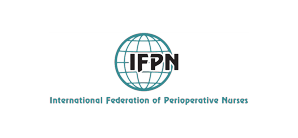AN EPIDEMIOLOGIC STUDY OF STOMACH AND COLORECTAL POLYPS IN LAKONIA AREA
Panagiotis Karavitis, Vasileios Dedes, Panagiotis Andriopoulos, Maria Tsironi, Andrea Paola Rojas Hill, Aspa Panagiotou, GeorgiosI. Panoutsopoulos4
Wednesday, July 1, 2020
Publication year:
2020
Authors:
- Karavitis Panagiotis, Department of Nursing, Faculty of Health Sciences, University of Peloponnese, Tripoli, Greece
- Dedes Vasileios, Department of Nursing, Faculty of Health Sciences, University of Peloponnese, Tripoli, Greece
- Andriopoulos Panagiotis, Department of Nursing, Faculty of Health Sciences, University of Peloponnese, Tripoli, Greece
- Tsironi Maria, Associate Professor in Internal Medicine, Department of Nursing, University of Peloponnese
- Rojas Hill Andrea Paola, .Department of Nursing, Faculty of Health Sciences, University of Peloponnese, Tripoli, Greece
- Panagiotou Aspa, Department of Nursing, Faculty of Health Sciences, University of Peloponnese, Tripoli, Greece
- Panoutsopoulos4 GeorgiosI., Assistant Professor in Human Physiology, Department of Nursing, University of Peloponnese
Keywords index:
Pages: 188-198
Abstract:
Introduction: Gastric polyps are found accidentally in an upper gastrointestinal endoscopy. Hyperplastic polyps and adenomas occur in areas where Helicobacter pylori infections are common. On the contrary, in western countries, they appear mainly as cystic glands, where H. pylori infections are less common. Colic polyps are lumps of mucus to the lumen, and when they are too large, they can form intestinal obstruction. Colic polyps can be neoplastic or non-neoplastic.Aim: The study of the gastric and colon polyps prevalence in a random sample of Lakonia patients who underwent endoscopy during 2016-2018. Material and Methods: From 3.270 patients who had endoscopy during the last three years, a sample of 10% was randomly selected. The sample included 327 patients, 169 who had undergone an upper gastrointestinal endoscopy and 158 who had a colonoscopy.Results: The upper gastrointestinal endoscopies revealed polyps in 35 of 169 patients (20,7%), and the majority of them (28) showed fundic gland polyps. The colonoscopies revealed polyps in 86 of 158 patients (54,6%), and the majority of them (54) were adenomas.Conclusions: Patients that had undergone upper gastrointestinal endoscopies had more than three times higher prevalence of polyps than that reported in the literature. Most of the polyps were fundic gland polyps, where their negative association with Helicobacter Pylori infection was confirmed, as well as their positive association with proton pumps inhibitors use. In patients with colonoscopies, polyps were mainly adenomas in higher percentages compared to the literature reports, while their higher frequency was confirmed after the age of 50.
Download PDF


